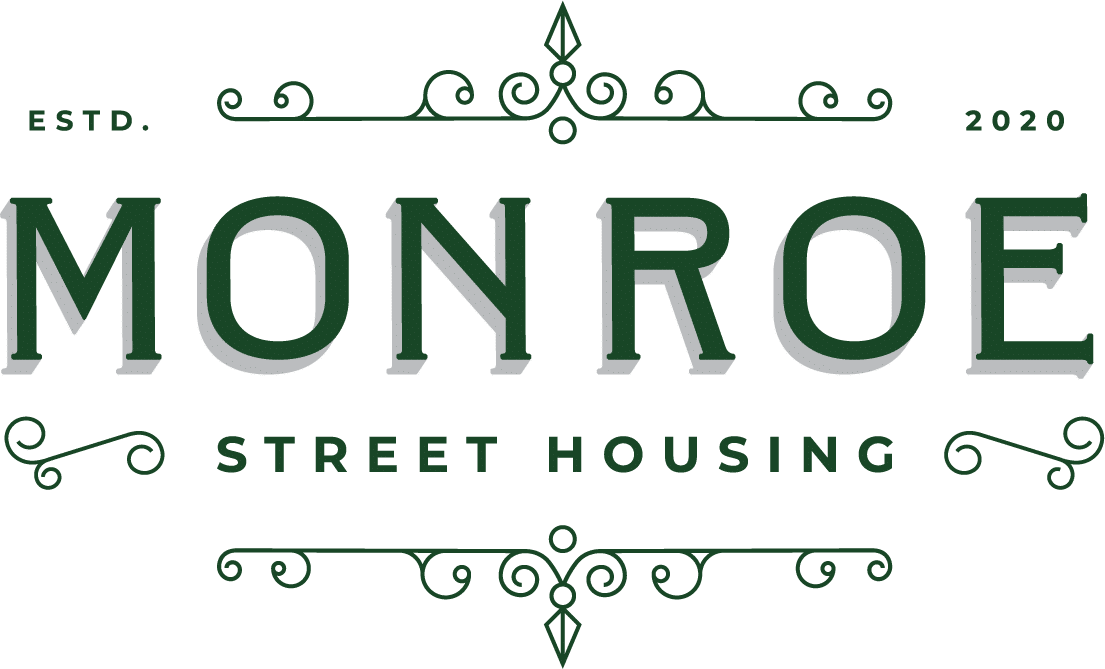Detoxing from alcohol, drugs, or other substance use disorders is not a skip through the park. Aftercare is an essential part of the journey to living soberly. The initial days and weeks following an inpatient treatment program can be particularly hard, especially if the patient’s home situation is very bad and not conducive to their recovery process. This can lead to triggers and relapses, which would knock a recovering addict right off the wagon.
Fortunately, there is a solution. Sober living homes bridge the gap between treatment and reintegration into society and for an important part of a person’s rehabilitation process. Halfway houses also bridge the gap between being institutionalized and reentering society as a functioning human being but differ greatly from sober living institutions.
Monroe Street Housing in Kokomo, Indiana takes a deeper look into the connection between a halfway house vs sober living homes.
What Is Sober Living?
 Sober living, just like it sounds, is a lifestyle free of drug and alcohol use. This involves a continual commitment to yourself, self-care, and abstinence. Alcohol and/or drug detox and treatment is the first step, but sober living goes far beyond just stopping substance abuse/use. Sober living demands that a person changes their entire attitude and behavior, transforming bad habits into good ones and destructive behaviors into healthy ones.
Sober living, just like it sounds, is a lifestyle free of drug and alcohol use. This involves a continual commitment to yourself, self-care, and abstinence. Alcohol and/or drug detox and treatment is the first step, but sober living goes far beyond just stopping substance abuse/use. Sober living demands that a person changes their entire attitude and behavior, transforming bad habits into good ones and destructive behaviors into healthy ones.
Taking up residence in a sober environment enables a person to develop life skills and put into play what they learned through their treatment programs. Sober living is the platform that enables recovering addicts to reshape their life and destiny, all while surrounded by a supportive community of peers and caring supervisors.
Sober living takes patience, time, dedication, and continual self-check-ins. Are you receiving the support you require? Are you taking care of your body and mind? Are you participating in activities that give you joy?
Recovery is a marathon, not a sprint, and due to its difficulties should never be tackled alone. Sober living requires a lot of support from friends, family, mentors, peers, and other support groups. Monroe Street Housing has you covered.
How Does Sober Living Work?
You can adopt a sober-living lifestyle either after you finish a substance abuse recovery program or during your addiction treatment. There are four classes of sober living environments, as determined by the National Association of Recovery Residences. These are:
- Class 1 Peer-Run. Peer-run environments are usually single-family homes that see a senior resident sitting as chairperson and everything runs democratically. Weekly meetings are common, as are random drug screenings, however, there are no clinical, paid positions within the home.
- Class 2 Monitored. Monitored environments are usually apartments or single-family homes. They are normally managed by a senior house resident who is normally compensated. Weekly house meetings, random drug tests, peer-run groups, and house rules are common.
- Class 3 Supervised. Supervised dwellings vary, but such environments are mostly licensed and have administrative oversights, organizational hierarchies, and policies and procedures. Drug tests are standard, clinical services are provided separately from sober living services, and all of the staff are certified.
- Class 4 Integrated. These environments lean more towards institutional and away from addiction treatment programs. There is a strong emphasis put on life skills development, and clinical services are provided in-house. The staff are all certified, and drug tests are the norm.
What Is a Halfway House?
You may recognize this term from a movie or series you have watched. Halfway houses serve as intermediaries or “halfway points” between an institution and independent living and society. They serve as a jumping board for people to learn how to reintegrate into society. Halfway-house residents usually come from correctional institutions or inpatient treatment facilities.
These institutions follow structured systems to maintain their residents’ sobriety, and random drug screening is mandatory. Halfway houses usually come with additional medical, mental health, medical, recovery, or educational services that support people as they become accustomed to their new lives.
Sober Living vs Halfway Houses?
It is important to pick a residence that is correct for you as you flow along the road to recovery. Understanding the difference between a halfway house and a sober living home can help you make an informed decision. A few differences are:
- Sober living homes are typically managed by addiction treatment centers or private individuals, whereas halfway houses are government funded and managed by government agencies.
- Sober living homes are open to individuals voluntarily taking residence, while halfway house occupancies are usually court-mandated and court-regulated.
- Sober living homes are structured along private residency aesthetics, providing more privacy and comfort, while halfway homes tend to be more dorm-like.
- Sober living homes offer better services and facilities and can be subsidized by insurance companies, but this comes at a higher cost. Halfway houses are funded through taxpayer money, so they are cheaper to run and easier to afford.
- Sober living home tenants usually join while engaged in a recovery program with a treatment center, whereas halfway house occupants are most likely joining from a correctional facility.
What Is a Sober-Living House Like?
Sober living houses are for-profit residences owned by private individuals or organizations. Potential tenants sign up voluntarily for space in such places. These domiciles can vary from low-cost, low-maintenance spaces to luxurious apartments and houses that have extensive lists of amenities and services included.
There are many styles that sober living homes can adopt, such as 12-step accommodations, holistic residencies, faith-based accommodations, and more. The diversity of available sober living homes ensures that anyone seeking a comfortable, safe, and structured place to live during their recovery can find the perfect place to suit their needs.
Sober living homes do, however, enforce a zero-tolerance policy for substance use and possession. All house meetings and house applications are mandatory for every sober living home tenant.
How Long Can You Reside in a Sober Living House?
The length of stay in a sober living home is dependent on a person’s recovery progress and on the particular rules of the facility. Not everyone progresses at the same rate, so some tenants may take up occupancy for relatively longer or shorter periods. A few sober living facilities will only accept occupants who are enrolled in treatment programs. Others will allow extended stays after treatment is completed.
A few factors that can affect the length of stay in a sober living house are the progress on clinical goals, the strength of addiction recovery, and the living situation at the home of the tenant. The recommended minimum length of stay is three months, but many people can benefit from lengthened stays for maintaining sobriety.
What Are the Requirements for Admission to a Sober Living Home?
Most sober living facilities will work with you personally to determine if you will benefit from their facility, but others require a minimum period of continual sobriety before they grant admission.
How Much Does Sober Living Cost?
The cost is determined by the duration a person plans to stay, as well as the type of sober living facility they have their eye set on. A good rule of thumb is: the more comfortable, spacious, and the more amenities and services a facility offers, the more it’s going to cost. Many facilities will offer a base rate and then charge extra for any added services, so make sure you enquire what the cost structure is like as well as which extra services are on offer.
Various additional services can be a gym membership, catered meals, cleaning services, transportation to appointments, and personal recovery coaching. You should keep in mind, though, that sober living facilities’ baseline is to help you reintegrate into society and learn to take care of yourself again, so cooking and cleaning on your own can boost your recovery process in a major way.
How do I Find the Right Sober Living Home?
Sober living typically follows addiction treatment, so a referral from the treatment facility will most likely be required. You could also seek referrals from a mental health professional, Twelve-Step participants/ sponsors, the criminal justice system, or friends and family.
Make time to visit the sober living house(s) you have your eye set on beforehand. Tour the facility, ask all of the questions you can think of, and speak to the current residents to help you determine if the facility is the correct fit for your needs. Reaching this step means that you take your sobriety seriously, so a little extra time spent digging for details will not go amiss.
Find Recovery at Monroe Street Housing
 Substance abuse recovery is not a cakewalk, and many people find taking up residency in an environment with a support system of peers and supervisors helps ease their journey. If you find yourself struggling to make a choice, or if you have further questions or concerns, contact Monroe Street Housing today.
Substance abuse recovery is not a cakewalk, and many people find taking up residency in an environment with a support system of peers and supervisors helps ease their journey. If you find yourself struggling to make a choice, or if you have further questions or concerns, contact Monroe Street Housing today.
Monroe Street Housing is a recovery and health treatment facility that focuses on wellness, substance abuse recovery, community, and independence. Our team of caring and experienced staff are here to help you regain control of your life and ease back into society as a healthy human being.
Our services range from weekly social activities, random drug testing, and weekly mentor meetings, to much more. We can help stand on your own two feet again and tackle life head-on. Visit our admissions section to enroll today.


Recent Comments